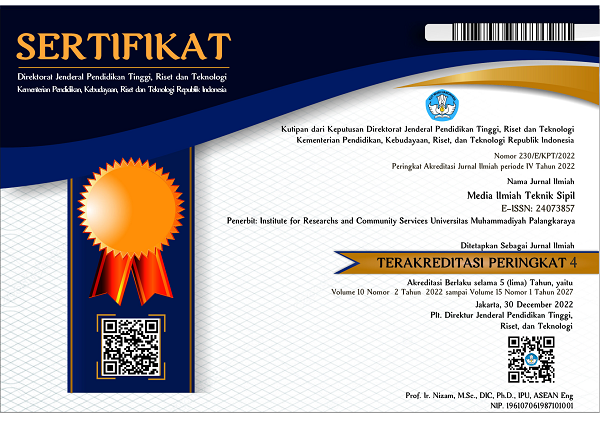Pengurangan Korosi di Bawah Fire Proofing dengan Metode Primer Coating
Corrosion Reduction Under Fire Proofing With The Primer Coating Method
DOI:
https://doi.org/10.33084/mits.v7i2.839Keywords:
Korosi dibawah fireproofing, struktur pipe rack, penopang peralatan kilangAbstract
The aim of the study was to provide an overview of the specifications of primary coating materials and their application method for corrosion control under the fireproofing of pipe rack structures and supporting structures of equipment in the oil refinery industry. The target to be achieved from this research is the availability of specifications of the primary coating material and the ease of its application to the structure of the pipe rack and the supporting structure of the oil refinery industry equipment. This research is an applied research method with a case study approach, namely in order to overcome the problem of corrosion under fireproofing. Allegedly the cause of corrosion under fireproofing is because in the refinery project specifications there is no provision of primary coating applications under fireproofing. The assumptions developed in answering the research problems are the availability of specifications of materials and methods for primary coating applications under fireproofing so that corrosion under fireproofing can be controlled and reduced. Specifications of primary coating material with service temperature (-45)oC - (650)oC with hi-built epoxy coating material, epoxy phenolic, epoxy nonov, inargonic copolymer and multi polymetric matrix, fulfilling NACE SP 0198-2010 technical specifications and application methods primary coating with a variation of the thickness of the primer coating is 100-200 micron (dry film thickness) DFT, proven to be suitable and suitable to be used to control corrosion problems under fireproofing. The results of this study also recommend that the specific material and primary application method for coatings that have been compiled in the primer guidelines for coatings that are in accordance with the specifications of NACE SP 0198-2010 can be used as the standard.
Downloads
References
ASTM E 337-15, (2015), Stadard Test Method for Measuring Humadity With A Psychrometer(The Measurement of Wet and Dry Bulb Temperatures, ASTM International
ISO 8501-1 Part 1, Rust Grades and Preparation Grades of Uncoated Steel Subtrates and Steel Substrates After Overall Removal of Previous Coating
ISO 8501-1 Part 2, Visual Assessment of Surface Cleanliness
ISO 8501-1 Part 3, Preparation Welds, Cut Edges and Other Areas With Surface Imperfection
Muftia, Haqi. Askan., dkk., (2011), Analisa Kegagalan Pada Pipa Elbowa 234-WPB Akibat Korosi Di Bawah Insulasi, Jurnal Intake, Vol. 2, Nomor 2, Oktober 2011
NACE SP 0198-2010, Control Of Corrosion Under Thermal Insulation and Fire Proofing Material- A System Approach
Project Specification X-1 Rev.4, (1982), Bechtel International: Pertamina Balikpapan Refinery Expansion Project, 1982
Project Specification JGC, (1994), General Spesification for Painting, Doc. No. PS-250- 13A1-001-E Rev R1, Pertamina Balikpapan Refinery I Upgrading Project.
Pujowidodo, Hariyotejo. Nuryadin, Bhakti. (2015), Evaluasi Kinerja Insulasi dan Kerusakan CUI Pipa Distribusi Uap Unit Utility Plant Pengolahan Minyak, Prosiding SNST ke-6 Tahun 2015, Fakultas Teknik Universitas Wahid Hasyim Semarang
Sulardi, (2019), Peralatan Industri, Penerbit Nusa Litera Insipirasi, Kab. Cirebon, Jawa Barat
Sulardi, Kurniawan, D., (2015), Pedoman Coating Perpipaan dan Peralatan Kilang, PT. Pertamina RU V, Balikpapan
Downloads
Published
How to Cite
Issue
Section
License
All rights reserved. This publication may be reproduced, stored in a retrieval system, or transmitted in any form or by any means, electronic, mechanical, photocopying, recording.







